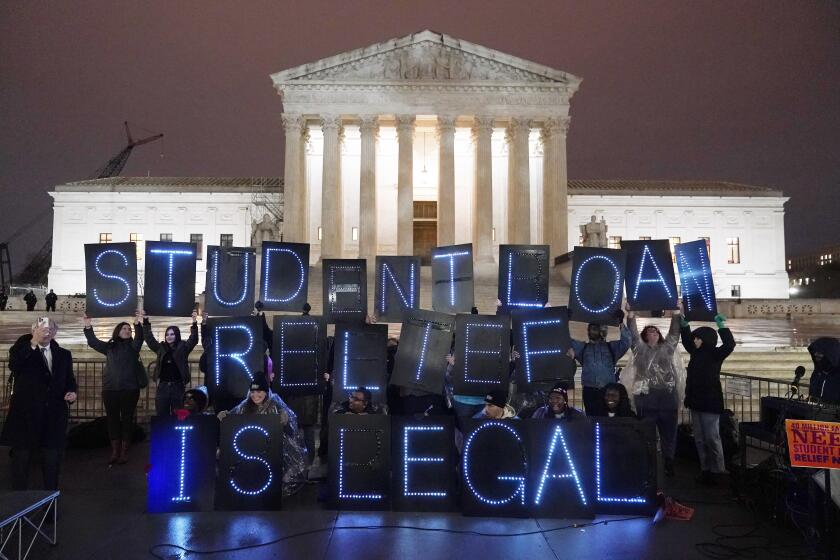Look at College Diversity From All Angles
Re “Race Has a Place in College Admissions,” Opinion, Dec. 29: William Adams is right in his assertion that diversity of the student body is important to the educational experience. However, an equally compelling factor is the undergraduate preparation that affirmative action makes possible, preparation necessary for students to enter graduate schools in medicine, law and science.
Graduate health professionals, attorneys, accountants and others are important to their communities for the common understanding, language and experience they bring to their relationships with their clients or patients. Affirmative action can increase the numbers of these professionals who will be able to more effectively minister to what is becoming an increasingly minority population in California and in other states. How can that be bad?
Muriel M. Shishkoff
Huntington Beach
*
I am not aware of any peer-reviewed research that supports Adams’ assertion that students learn more, and learn more powerfully (whatever that means), in settings that include individuals from different backgrounds. Personally, I picked up four engineering degrees and a financial planning certificate while part of student bodies that varied widely from each other in ethnic makeup, and I never observed any correlation between student body ethnic makeup and the amount learned. Adams is just espousing politically correct -- but factually incorrect -- misinformation to support a bad idea.
David Hilts
La Palma
*
In terms of Adams’ positions on the place of race in college admissions, I wonder whether he would lobby for European Americans to have access to some of the more elite western U.S. universities, such as some of the University of California campuses or USC, or to historically black Southern schools. It seems the trend today is quite disproportional, in terms of Asian American, Hispanic and African American on-campus student percentages.
Consider the statistics: At UC Irvine, 53% of the student body is Asian American; Berkeley has 42% Asian Americans; UCLA has 39%. USC has 23% Asian American students. Some Cal State University campuses have stated they are “Hispanic-serving institutions.” Most historically black colleges do not make concerted attempts to reach out to nonblack students.
Would not these institutions benefit from the diversity that European Americans could bring to their racially disproportionate populations? If Adams is right when he says using race “is not so much about remediation ... of past discrimination as it is about positively affecting the country’s social relations,” why do his positions not address schools with disproportionately high percentages of non-European Americans? The numbers have not “suddenly” escalated. Sounds like reverse discrimination with new packaging: If it’s white, it ain’t right.
Ernie Zarra
Bakersfield
*
My college education comprised about nine years as an undergraduate, graduate student and postdoctoral fellow, but one of my most significant educational experiences was the years I spent in military service (in the Air Force) during the Korean War. Fellow GIs were white, black, Latino and Native American and came from all sorts of cultural backgrounds: rednecks, hillbillies, city slickers, upper-echelon types, fundamentalists -- a wonderful assortment.
In addition to learning to live and work effectively with a variety of people, one also learned that education was valuable and a means to an improved life and came away with a better understanding of what it meant to be an American. The federal government could well consider universal military training as part of its educational program.
W.A. Mueller
Sherman Oaks
More to Read
Sign up for Essential California
The most important California stories and recommendations in your inbox every morning.
You may occasionally receive promotional content from the Los Angeles Times.






